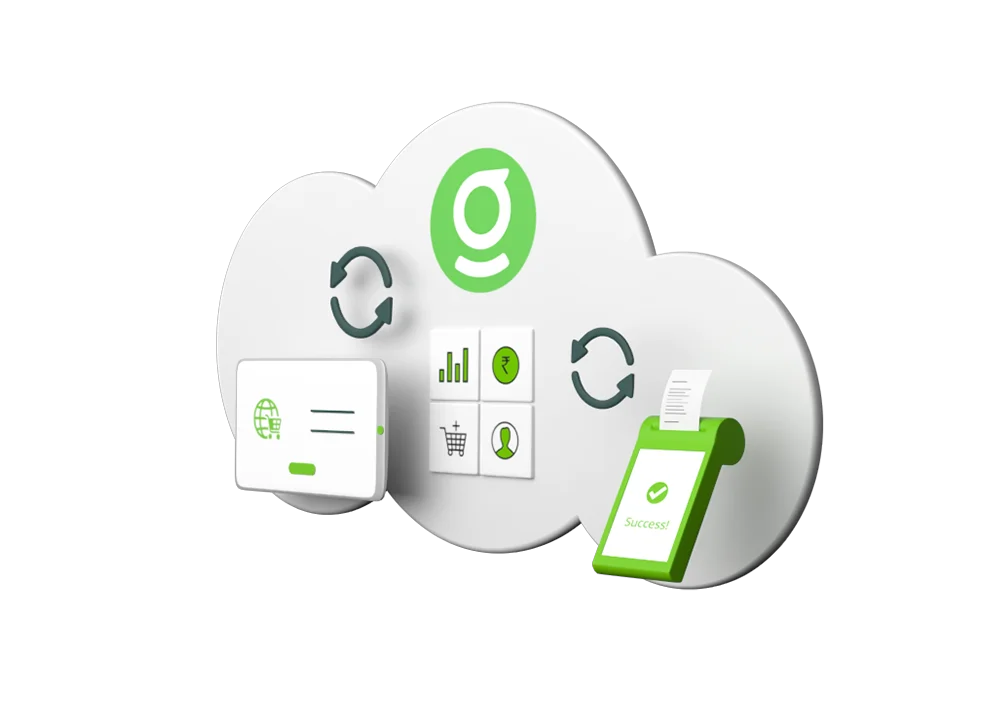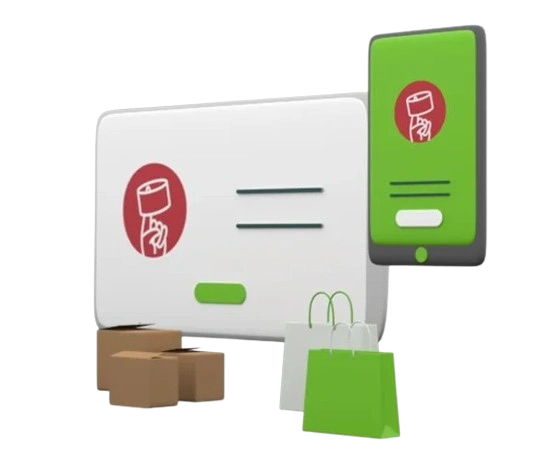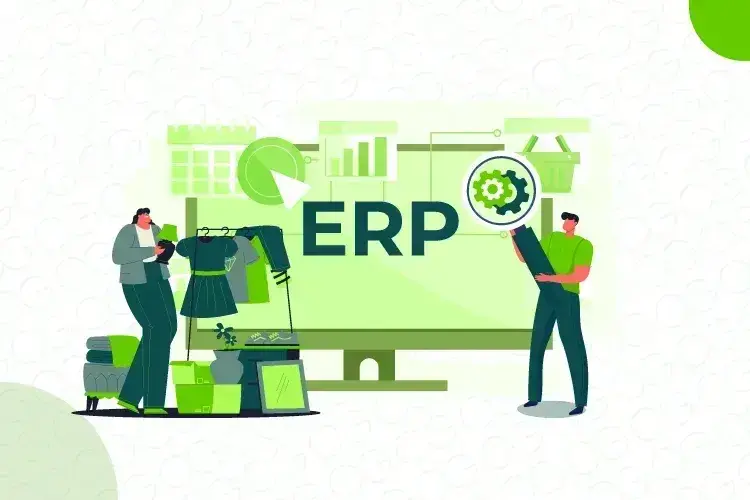How Apparel ERP Software Can Streamline Seasonal Collection Planning
Apparel brands face a relentless cycle of fashion seasons. Every few months new collections must hit the market as consumer tastes shift with trends, weather, and even global events. Design teams, procurement, factories and retailers must all collaborate on tight timelines. Missing a single deadline can leave a collection unfinished or a store out of stock on key items. On one hand, poorly planned launches cause lost sales and markdowns; on the other, over-ordering risks wasted inventory.
ERP (Enterprise Resource Planning) systems ties together design, planning, manufacturing, and sales data so that every team operates on the same page. In this blog, we explore the challenges of seasonal planning in apparel and how a purpose-built apparel ERP can rightly address the challenges of seasonal planning in the apparel industry. From demand forecasting and materials planning, through production execution, to omnichannel delivery, the right ERP system can turn seasonal pressures into best-selling opportunities.
What’s Holding Apparel Brands Back?
Brands must forecast demand for dozens or even hundreds of new styles each season, and get fabric, trims, and production lined up in advance. Misjudging demand can create labour shortages, overstocking or stockouts, with direct negative impacts on the sales and customer end.
Fast-fashion giants like Shein have shown that data-driven agility pays off big. By tying all 300 of its global production units to a central ERP, Shein has claimed a 3‑day supply cycle and no missed orders for years.
Yet another challenge is the sheer complexity of product variations. A seasonal collection might have 50 styles, each offered in 5 sizes and 4 colours. That’s 1,000 SKUs to track. Managing which colours and sizes will sell best in each channel and ensuring that the right volumes move through the pipeline, is daunting.
Meanwhile, the workflow is fragmented. Design teams create styles months in advance, supply chain teams source fabrics, factories cut and sew garments, often with external job-work partners, and retailers push out finished goods. Without tight integration, each department tends to use its own legacy tools, leading to fragmented data that makes it very difficult to synchronize inventory and spot problems early on.

Take control of seasonal planning with Ginesys’ an end-to-end ERP built for fashion brands that move fast.
Using Data to Predict What Sells Before the Season Starts
Accurate demand forecasting is the foundation of seasonal planning. Modern apparel ERP systems use historical sales data, market trend feeds and even social-media signals to predict how many units of each style/size/colour will sell. They go beyond last year’s numbers, adjusting for emerging trends and changing customer preferences.
For example, an AI-driven ERP can automatically generate suggested purchase orders by applying predictive forecasting models to past sales and current trend data. Automation speeds up what would otherwise be a tedious manual exercise. Planners can then review and tweak forecasts for new or untested designs.
Live, contextual data from your ERP makes all the difference when it comes to trends. Imagine being able to see early sell-through rates by style or store right from your dashboard. If that jacket you just launched is disappearing off of shelves, your team can instantly trigger a restock. If a particular item isn’t gaining traction, you can pivot i.e. mark it down, push a promo, or hold back on replenishment.
How Materials Requirements Planning (MRP) Powers Seasonal Readiness
A key capability of apparel ERP is integrated MRP that ties raw material purchases to the production schedule. The system starts with the Bill of Materials (BoM) for each garment, detailing fabrics, linings, zips, buttons, etc., often in multiple levels of sub-assemblies. It then references the forecasted production plan — how many of each style will be made when — to calculate exactly how much of each raw material is needed.
A dynamic MRP engine ensures that fabric rolls and trim arrive just in time for cutting and sewing. Instead of ordering a fixed safety stock, planners can create a sample run or pilot production, evaluate real usage, and then let the ERP expand the plan to full production. The system automatically issues planned purchase orders to suppliers when lead time requires it.
By aligning fabric and trim buying with the seasonal production schedule, the ERP dramatically cuts waste and WIP carrying costs.

Align forecasting, production, and store delivery for every fashion season with Ginesys’ Retail ERP.
Staying in Control of Real-time SKU tracking across all Warehouses
The system knows exactly how many pieces of each variant exist in each location. Automated replenishment features then handle routine work. If red T-shirt sizes are nearly out at one store, for example, the ERP can automatically trigger a transfer from a nearby store or warehouse. These capabilities boost fill rates, ensuring customers find the styles they want while minimizing overstock elsewhere.
Built-in predictive analytics also mitigate stock risks. The system flags potential overstock when a trend fades and highlights hot SKUs that may need extra inventory. If a particular dress colour is unusually popular online, the ERP can reallocate stock from slower stores.
Linking Production and Supplier into One Smooth Workflow
In garment manufacturing, the devil is in the details, especially when multiple suppliers handle cutting, sewing, and finishing. A robust ERP automates production planning end-to-end. Sales orders and planned cuts automatically flow into the system, which schedules each job-work process in sequence. The ERP tracks WIP at every stage: cut pieces, half-sewn shirts, packaged goods, etc. Planners see real-time status updates and can intervene if a supplier is falling behind.
By orchestrating the cut-make-trim workflow, ERP removes manual coordination. Each subcontractor login or factory update feeds back into the centralized system. The ERP also captures costing information automatically. Every meter of fabric issued, every subcontractor invoice, and every finished piece gets tracked in one place. That kind of visibility means teams aren’t over-ordering raw materials or scrambling to plug last-minute gaps. If a fabric batch is delayed, the system can shuffle priorities or suggest alternate jobs to keep production lines moving.
When supplier coordination flows this smoothly, seasonal collections stay on schedule and teams less time managing and more time delivering quality in a timely manner.

Centralized Collaboration & Workflow Visibility
A powerful benefit of an ERP software is a single source of truth across departments. Everyone from design to stores sees the same data. When the design team finalizes sketches, those style details automatically populate the ERP, which downstream teams immediately use for procurement and production. Store sales also feed back into the system to update remaining inventory.
The payoff is faster decision-making. With instant visibility, your merchandisers and planners don’t have to wait days for reports. They can launch ad-hoc dashboards, compare actuals to plan, and approve changes on the fly. This transparency prevents costly rework and duplication.
Make Faster Decisions with Live Sales, Stock, and Style Data
For seasonal planning, the ability to react quickly is everything. That’s why modern apparel ERPs feature live analytics dashboards. Executives and planners can track key performance indicators on the go.
Dashboards may show sales velocity by style, or inventory turnover at a glance. Size and colour performance charts highlight which variants are exceeding or lagging targets. Alerts and notifications can pop up if a style hits a replenishment threshold or if sales are deviating from forecasts.
This real-time visibility lets teams adjust strategy mid-season. If an early selling trend emerges, the planner might increase production or rush shipments. If a style underperforms, they can roll out promotions. Being able to analyse complex data sets as one and get instantaneous insight changes the game in seasonal planning.
Contextualized business intelligence helps fashion brands make more intelligent decisions by surfacing actionable insights precisely when and where they’re needed.

Unify your online orders, inventory, and fulfilment across all marketplaces with Ginesys OMS.
Advanced Warehouse & Omnichannel Fulfilment for Seasonal Agility
At the back end, ERP-driven warehouse management ensures goods flow smoothly to meet seasonal demand. The software supports advanced bin management and warehouse workflows optimized for apparel. Warehouse staff can define bins or racks by category and use mobile apps to scan and reserve inventory.
When an order comes in, the ERP guides pickers to exactly the right shelf. Staff can even perform cycle counts in the moment to keep records accurate during busy seasons. Such level of control ensures that picking and shipping styles in the heat of a season is fast and precise.
Omnichannel stock synchronization is yet another critical element. Fashion buyers shop across web, stores, and marketplaces simultaneously. An integrated apparel ERP ties all channels together. Real-time inventory updates ensure that selling a shirt online automatically decrements the store stock and vice versa. This unified view lets companies safely do things like ship-from-store or pool inventory to wherever it’s most needed.
An ERP might automatically route a late night online order to the nearest brick-and-mortar stock, allowing customer expectations to be met without overloading any single warehouse. This reliability becomes a huge edge in seasonal shopping frenzies. Customers find the styles they want while brands avoid loss of sales due to faux out-of-stocks.
How Ginesys Powers Seasonal Planning from Design Board to Storefront
Ginesys offers a retail ERP platform designed specifically for fashion and lifestyle brands in India, simplifying operations across the entire retail value chain. From material procurement to franchise sales and marketplace integration, its apparel-focused capabilities make it a powerful system for seasonal collection planning.
Production Planning and Material Control
For fashion retailers managing seasonal collections, Ginesys supports multi-level Bills of Materials (BoMs) that link directly to Materials Requirement Planning (MRP). Brands can start with a sample run and smoothly scale to full production. Every fabric, trim, and accessory requirement is mapped against style-level demand, ensuring that procurement aligns precisely with production needs.
Real-Time Raw Material and WIP Visibility
Ginesys enables real-time tracking of raw materials and work-in-progress (WIP) at every stage of the production lifecycle. Whether it is fabric received, issued for cutting, or a job-work process underway, the system captures each movement and job-work bill. This visibility keeps production on schedule throughout the season.
Warehouse Management and Inventory Efficiency
The platform features an apparel-friendly Warehouse Management System (WMS) that supports bin-wise inventory, optimized picking, and mobile-based cycle counting. These tools ensure accurate stockkeeping, even during peak sales periods. By improving warehouse efficiency, brands can quickly allocate seasonal goods to the right stores or online channels.
Unified Omnichannel and Franchise Sales View
Businesses gain end-to-end visibility into store, franchise, and e-commerce operations from a single dashboard. Central teams can monitor distributor activity, secondary sales, and channel-specific performance in real time. This ensures that seasonal promotions and new collections reach every customer touchpoint efficiently, and their impact is measurable right away.
Built-In Business Intelligence and Dashboards
To make data-driven seasonal decisions, Ginesys includes integrated BI tools with customizable dashboards. Teams can track KPIs like sales velocity, inventory turnover, and size/colour performance without relying on spreadsheets or third-party tools. Real-time alerts and reports help identify slow-moving styles early, enabling price adjustments or redistribution to maximize sell-through.

Discover how Ginesys ERP can transform your apparel operations from design to delivery.
In the apparel business, the key to a successful season is tight coordination. A specialized apparel ERP simplifies each stage of seasonal planning. It uses demand forecasting and MRP to align purchasing with trends. It automates shop-floor workflows with supplier coordination, gives all teams a shared view of progress, and feeds live analytics into every decision.
With ERP intelligence, companies rely on data-driven signals to stock, produce, and sell the right styles. Whether it’s adjusting stock levels, managing fabric delays, or rolling out promotions across multiple channels, ERP intelligence provides the agility apparel brands need to thrive in rapid seasonal cycles.
If your business struggles with fragmented planning and management, it may be time to rethink the tools behind your seasonal strategy. Ginesys’ modern, apparel-focused ERP connects design, procurement, production, warehousing, and sales into a single, well-oiled system. Book a demo today to turn your seasonal collection planning into success on every occasion.

